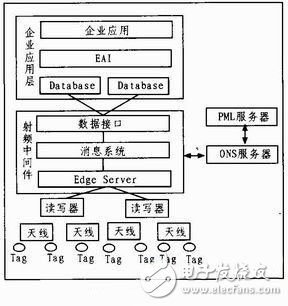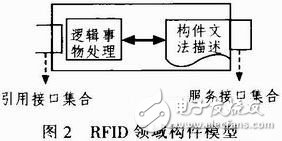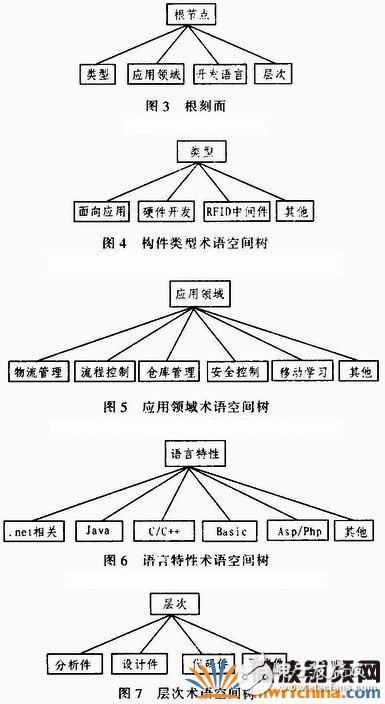Detailed explanation of software component development technology in RFID field
RFID (Raclio Frequency IdenTIficaTION), ie, radio frequency identification, is a non-contact automatic identification technology that uses wireless radio frequency methods to conduct non-contact two-way communication and data exchange while identifying. The field of RFID applications has been expanding. It has now involved all aspects of daily life and will become a basic technology for the future information society. In particular, with the concept of "Internet of Things" causing widespread concern in the industry, as a kind of advanced productivity, the widespread application of RFID technology has greatly promoted the improvement of production efficiency and user application experience.
The proportion of RFID software in the overall development of RFID is also increasing, and software design and R&D are affected by different network and hardware environments, resulting in low production efficiency and high development costs. Although RFID software is diversified and closely related to hardware, software components still have common features and components. Therefore, component technology can support efficient development of RDID application systems.
Therefore, in this paper, we use component methods to develop software in the field of RFID, extracting and decomposing functions, and designing the corresponding software as software to enable it to be repeatedly used. This is an effective way to improve software development efficiency and ensure software quality. .
1 Componentized Software Development MethodIn the middle and late 1990s, with the rise of distributed objects, Internet, Java, and Client/Server computing models, the component-based software development model was widely accepted by researchers. A software component is an assembly unit with a specification interface and a defined context dependency that can be deployed independently and assembled by a third party.
The componentized software process should be divided into two independent sub-processes: domain engineering (development component) and application process (using component development application). The two sub-processes are connected through component libraries. Therefore, the main research content of componentized software development technology can be divided into three parts: domain engineering, application engineering and process management.
Domain engineering is the process of establishing basic capabilities and necessary foundations for application engineering of a group of similar or similar systems. It is a process of producing components of a system and is the main method of developing components. Domain engineering includes three major phases:
1) Domain Analysis The purpose of domain analysis is to establish a domain model (DomainModel), a common need among systems in the domain model description domain. The main contents of the domain analysis include the determination of domain boundaries, identification of information sources, analysis of system requirements in the field, determination of what needs are widely shared by the systems in the domain, which are variable, and eventually establish the domain model.
2) Domain Design The goal of domain design is to obtain the Domain SDecific Software Architecture (DSSA). Domain design needs to consider several implementation issues, such as: operating system, programming tools used, software distribution, data access methods, selection of architectural styles (eg two-tier C/S method, B/S structure, three-tier structure), Select the component implementation model.
3) Realization of Realm Realm realization is the realization of functional components and architectural components in the realm of domain design, generation of final binary code, and application software development integrated into the final program.
These active products (reusable software components) include: domain models, domain architectures, domain-specific languages, code generators, and code components.
2 RFID software component technology2.1 RFID field analysis
Through the analysis of the RFID software system, the public features and variable features of RFID applications are identified, and the objects and operations that characterize these features are selected and abstracted to form a domain model.
A typical RFID system is divided into three main parts: hardware, application software, and RFID middleware.
Hardware section: mainly includes RFID readers, antennas, and tags. RFID readers are placed in pre-set positions. Electronic tags are attached to the object to be identified. Tag data can be realized in the reading range of the RFID antenna. Read.
Application Software: It is mainly related to enterprise management systems such as ERP and MRP.
RFID middleware: In addition to software running on tags and readers, middleware between readers and enterprise applications is an important part of RFID software. The middleware provides a series of computing functions for enterprise applications and is known as Savant in the Electronic Product Code (EPC) specification. Its main task is to collect, decrypt, filter, convert and import the data collected by the hardware into the application software system and present it on the interface through the application system for the operator to browse, query, select, and modify.

Comprehensive analysis of the overall structure of RFID, this article summarizes the RFID architecture as shown in Figure 1: RFID reader and RFID tags constitute RFID hardware systems; RF middleware, ie, RFID middleware, while connecting to the ONS server and PML server, can be global A "new network" is formed within the scope; the enterprise application layer accepts the relevant RFID information data from the RFID middleware and is the back-end application part of the RFID data.
2.2 RFID domain component model
The component model plays an important role in the research of component development methods. The component model is the core content of the component technology. As a component description language, XML language has strong advantages over other languages. It facilitates the assembly tool to understand the component information through the component's description document and to verify the constraint relationship between components. Based on the common component model, the domain component model adopted in this paper is shown in Figure 2.

As can be seen from the RFID domain component model of Figure 2, domain components include component entities and component grammar descriptions. Among them, component entities include component attributes, component service interfaces, component reference interfaces, etc.; component grammar descriptions are <component relationship collections, service interface collections, reference interface collections> description documents. In the component grammar description, the component relationship set is the set of components that the component depends on and the set of components mutually exclusive to the component; the service interface set is the external service interface provided by the component; the component reference interface set is referenced by the component. Interfaces for other component services.
3 Component Classification in RFID FieldIn the development and accumulation of RFID component library components, basic components including basic application classes, presentation layer classes, computational logic classes, and flow class components, and dedicated components applied to readers, electronic tags, and communication networks will be produced. With the continuous development and in-depth evolution of the RFID field, it is necessary to appropriately modify, expand, and delete the attributes of the RFID components while maintaining the overall representation structure, so as to ensure the accuracy of the component description.
3.1 Advantages of facet classification in the RFID field
There are many kinds of component classification methods. The facet classification method is more suitable for facing domain-specific component library. The facet classification model in a specific domain is easy to derive from the domain model. The faceted classification method is used to classify the components in the RFID component library, and the basic components and special components of the RFID component library are unified organized, managed and retrieved by the common features of various components. On this basis, component retrieval is performed. Technical research.
From the aspect of the facet classification model itself, it does not distinguish between domains. It requires that all components use the same facet to describe. This restriction greatly affects the user's understanding of the target domain and the search efficiency and quality. Different areas, facet descriptions may have major differences. Therefore, facing the specific domain component library, limiting the domain terminology space, will greatly improve the precision of the component.
3.2 Facet description in RFID field
Prieto-Diaz's earliest proposed facet classification scheme includes two aspects: "function" and "environment". Through the above analysis of the field of RFID systems, combined with the actual application system development needs, this article uses a 4-tuple to describe the components. The specific attributes are shown in Figure 3.
1) TYpe type:
2) ApplicaTIon Domain applications;
3) Language language features;
4) Level;

The above four attributes are orthogonal to each other, fully embodying the most relevant feature representation of the component to the user, and can better adapt to the development of the RFID component library and the compatibility expansion of facets. The term space tree established by this facet classification is shown in Figures 4-7.
4 ConclusionSoftware reuse technology can solve the problem of increasing software size and complexity. Component-based software development is an effective method of software reuse. This method is also suitable for use in the development of RFID software. This paper analyzes and studies the system structure in the field of RFID, thus introducing the component model of RFID field; analyzing the classification method of RFID software components and selecting facet classification as the classification method of RFID software components, and performing the facet and terminology of each facet Explained in detail, to provide reference for component development of RFID software.
Handheld Fan Mini Portable Fan Powerful Personal Fans Speed Adjustable Battery Operated Type-C Rechargeable Eyelash Fan for Kids Women Men Indoor Outdoor Travel Cooling.
Mini Type-C Rechargeable Fan] cooling desk fans are built with 1200mAh rechargeable lithium battery, 3 adjustable speeds, fully charges in 3 hours, wireless working time 3-10hours. The lanyard design frees your hands and perfect for traveling
[3 Adjustable Speed & Enjoy Cool Summer]3 Adjustable Speed Level -- natural wind/cool wind/strong wind, just adjust the appropriate fan speed by pressing the power button repeatedly. Equipped with 3pcs fan blades which are made of ABS material, strong and durable produces a strong and soft airflow. Never worry about the outdoors even the temperature is so high. Just enjoy your cooling summer with this must-have
[Convenient design of portable fan]The mini fan weighs only 90 grams, That you can hang it around your neck with a lanyard without any pressure. Even if your child uses it, it will not bear weight pressure. You can put it in a backpack or handbag or even in your pocket when traveling outdoors. This simple and compact design is particularly suitable for summer travel or outdoor sports.
[Rechargeable Battery & Energy Source]The Type-C electric fan can be recharged with Type-C charger, laptop, computer, power bank, car power ban and other Type-C enable devices. A happy and lasting family journey
[Perfect Gift & After-sales]You can get a portable rechargeable fan, a Type-C cable, a lanyard, a fan stand and a User guide in the package. It's definitely a perfect gift idea for your families, friends, or your loved ones.
Rechargeable Small Pocket Fan,Handheld Mini fan, 3 In 1 Portable Type-C Mini fan
Shenzhen Focras Technology Co.,Ltd , https://www.focrass.com